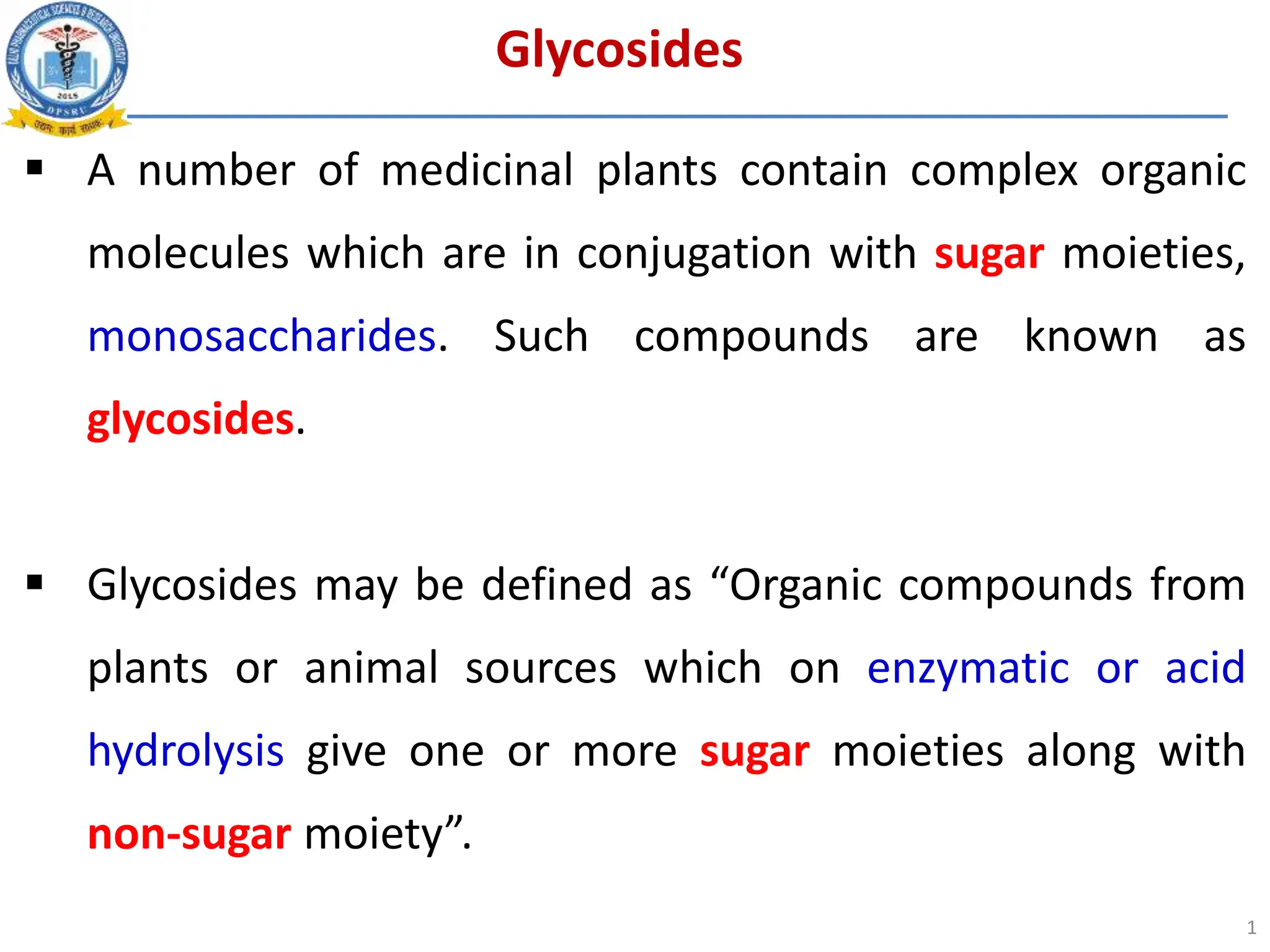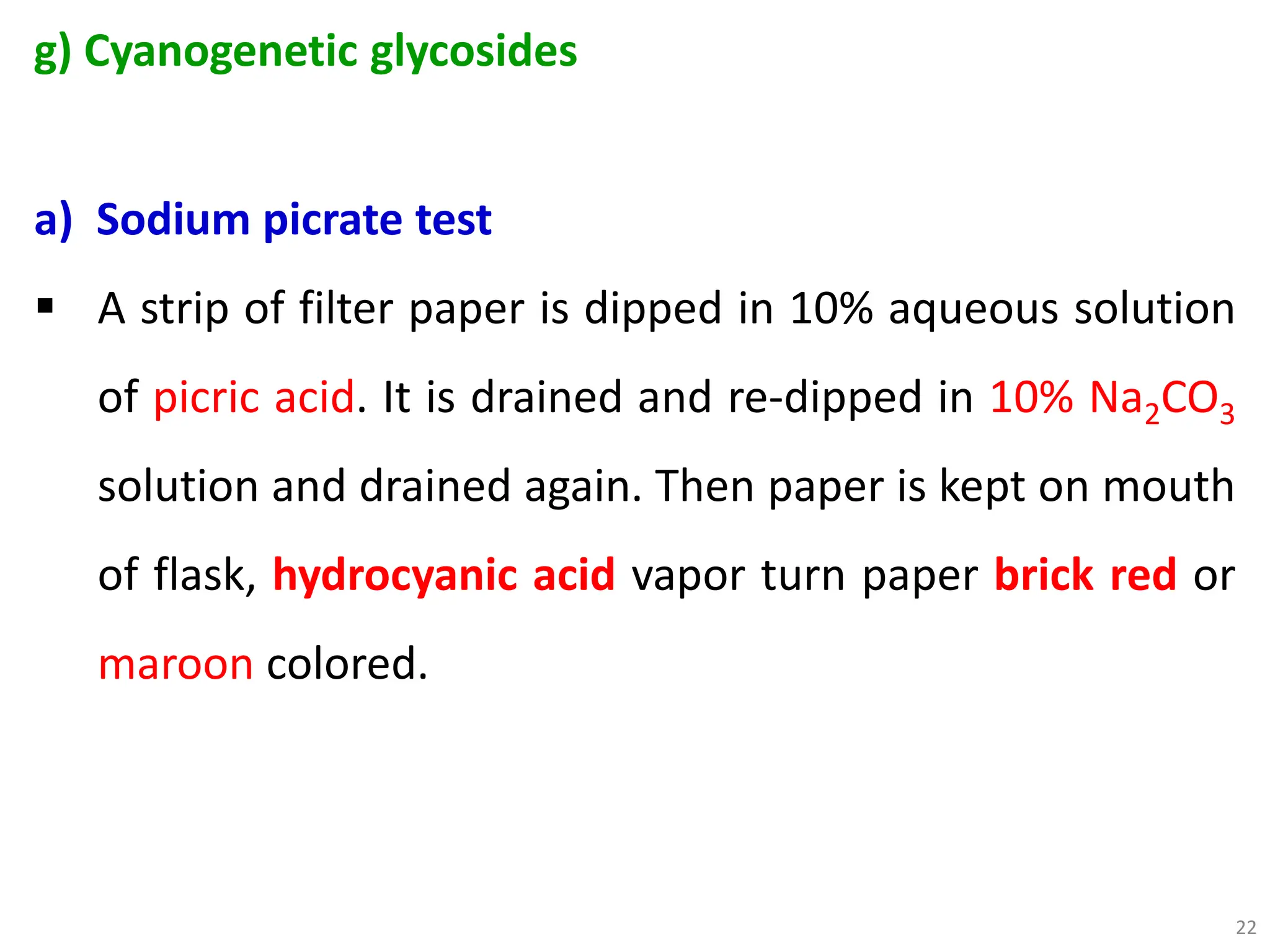The document discusses different types of glycosides found in medicinal plants. Glycosides are organic compounds made up of a sugar (glycone) and non-sugar (aglycone) part. Major types include anthraquinone, cardiac, saponin, cyanogenic, flavonoid glycosides. Glycosides are classified based on the aglycone chemical nature, therapeutic activity, type of glycone, or linkage between glycone and aglycone parts such as C-, O-, S- glycosides. Common tests are used to identify different glycosides in plants.






































































